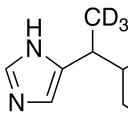Elucidating the biosynthetic and regulatory mechanisms of flavonoid-derived bioactive components in Epimedium sagittatum.
Lykilorð
Útdráttur
Herba epimedii (Epimedium), a traditional Chinese medicine, has been widely used as a kidney tonic and antirheumatic medicine for thousands of years. In Epimedium, flavonoids have been demonstrated to be the main bioactive components (BCs). However, the molecular biosynthetic and regulatory mechanisms of flavonoid-derived BCs remain obscure. In this study, we isolated 12 structural genes and two putative transcription factors (TFs) in the flavonoid pathway. Phytochemical analysis showed that the total content of four representative BCs (epimedin A, B, C, and icariin) decreased slightly or dramatically in two lines of Epimedium sagittatum during leaf development. Transcriptional analysis revealed that two R2R3-MYB TFs (EsMYBA1 and EsMYBF1), together with a bHLH TF (EsGL3) and WD40 protein (EsTTG1), were supposed to coordinately regulate the anthocyanin and flavonol-derived BCs biosynthesis in leaves. Overexpression of EsFLS (flavonol synthase) in tobacco resulted in increased flavonols content and decreased anthocyanins content in flowers. Moreover, EsMYB12 negatively correlated with the accumulation of the four BCs, and might act as a transcriptional repressor in the flavonoid pathway. Therefore, the anthocyanin pathway may coordinate with the flavonol-derived BCs pathway in Epimedium leaves. A better understanding of the flavonoid biosynthetic and regulatory mechanisms in E. sagittatum will facilitate functional characterization, metabolic engineering, and molecular breeding studies of Epimedium species.



